Tableau 2020.1 is here, and it has come with a lot of new improvements and functionalities, many of which are mainly focused on user experience and adding value to the platform.
We at Empirical have been exploring everything new and decided to make a round-up of the top ten best new features to share them with you.
You can also check out our more recent Tableau 2020.2 feature highlight.
1. Dynamic Parameters
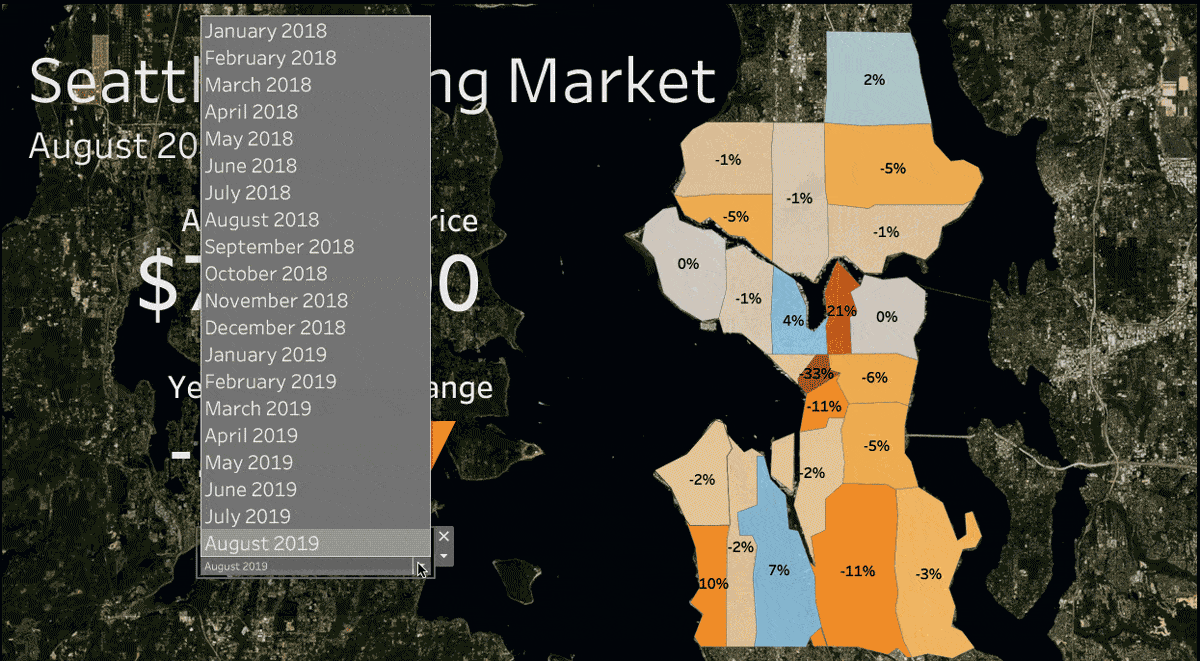
Dynamic Parameters options.
With Tableau 2020.1, you can now deploy your workbooks with dynamic parameters that will automatically update with the most current values every time the workbook is opened. This not only saves you time but also minimizes human error, making your visualization the ultimate source of truth for either your stakeholders or your audience.
2. Map Improvements in the browser

Map view from the browser.
Now you can change background map styles, map layers, demographic layers, and repeat backgrounds, all from the browser. There’s also a new style picker dropdown to find and distinguish between map styles.
3. Buffer Calculations for better spatial analysis

Buffer Calculations visual representation.
Spatial analysis for understanding proximity and distance is now easier than ever in Tableau 2020.1 with buffer calculations. By giving Tableau three parameters (distance, location, and a unit of measure) it will instantly create a visual boundary or buffer around the area.
4. Explain Data Improvements

Explain data improvements example.
Now you can go even deeper into your data with Explain Data with performance improvements for large datasets and refined models.
5. Dashboard Extensions

Map filters by hovering over animal pictures in Dashboard Extensions.
You can add unique features to dashboards with extensions that you can easily incorporate into dashboards layouts just like any other dashboard object. With the help of web applications created by third-party developers, extensions can expand dashboard functionality.
You can create your own extensions if you are a developer. See the Tableau Extensions API documentation on GitHub.
6. Viz Animations
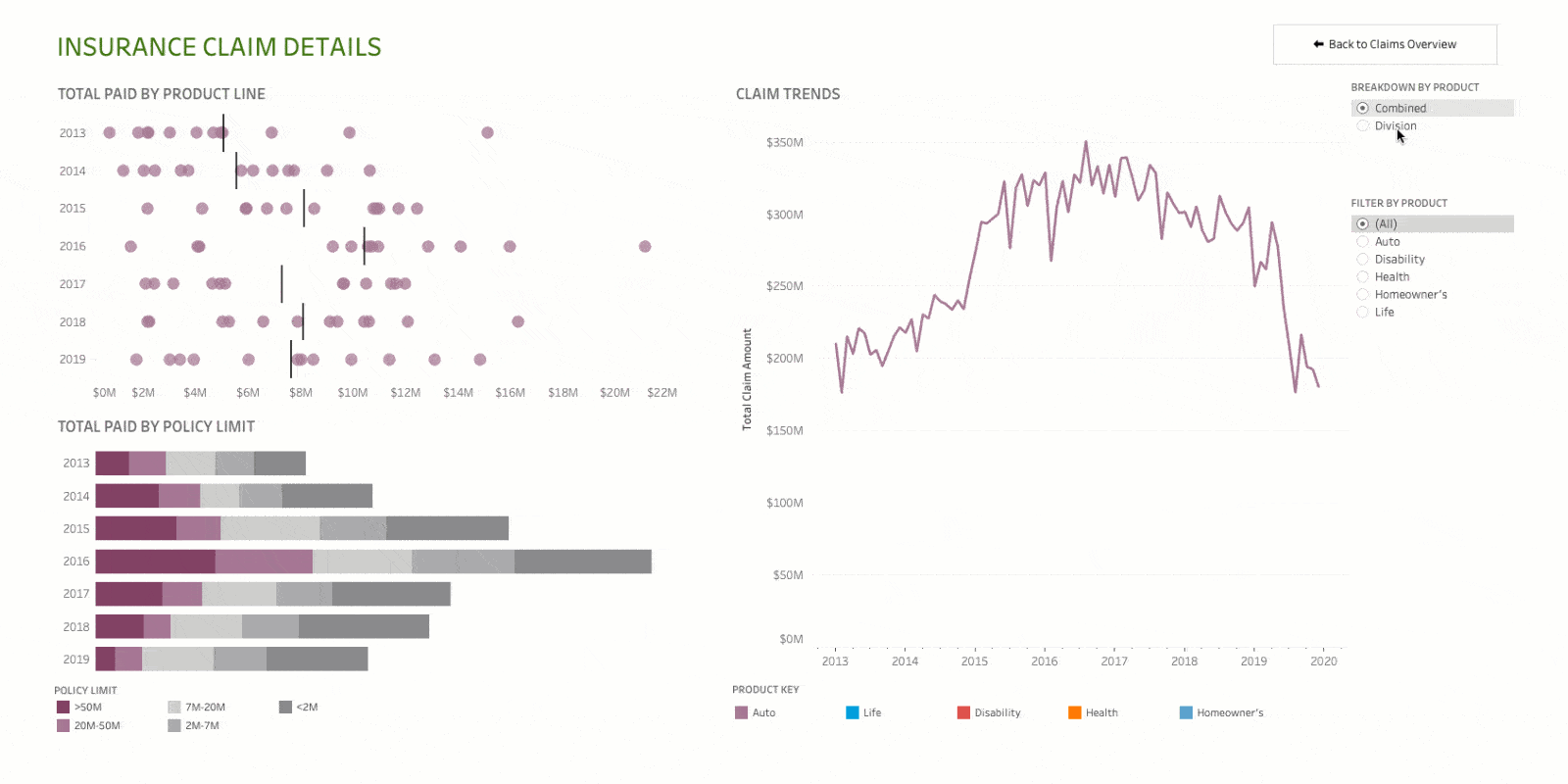
Example of Viz Animations when changing filters.
Tableau Viz Animations make it easier to explore, understand and present your data. Every change is animated so you can see your charts moving smoothly to give you a better view of the details that are more difficult to catch at first glance. All while looking very cool!
Go to Format > Animations… to enable them by setting the Workbook Default to On.
This feature paired with the new Play Button (now available in the browser for workbooks using pages) lets you see coherent transitions showing changes between stages or over time. Take a look at this example:

Example of Viz Animations when clicking the Play Button.
7. Export Dashboard Button
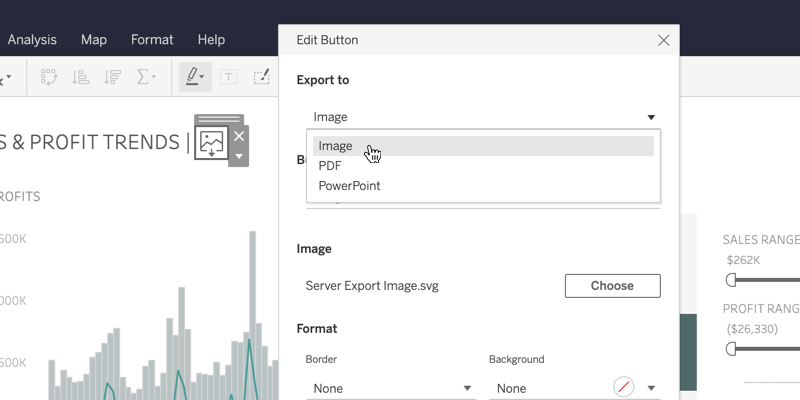
Export Dashboard Button edit options.
A heavily requested feature that will benefit both creators and end-users. The Export Dashboard Button is a new dashboard object that lets you create a single customizable button that lets you determine the export format.
This allows end-users to export dashboards with the click of a button, saving them time, especially for inexperienced users.
8. Improved Permissions Dialog
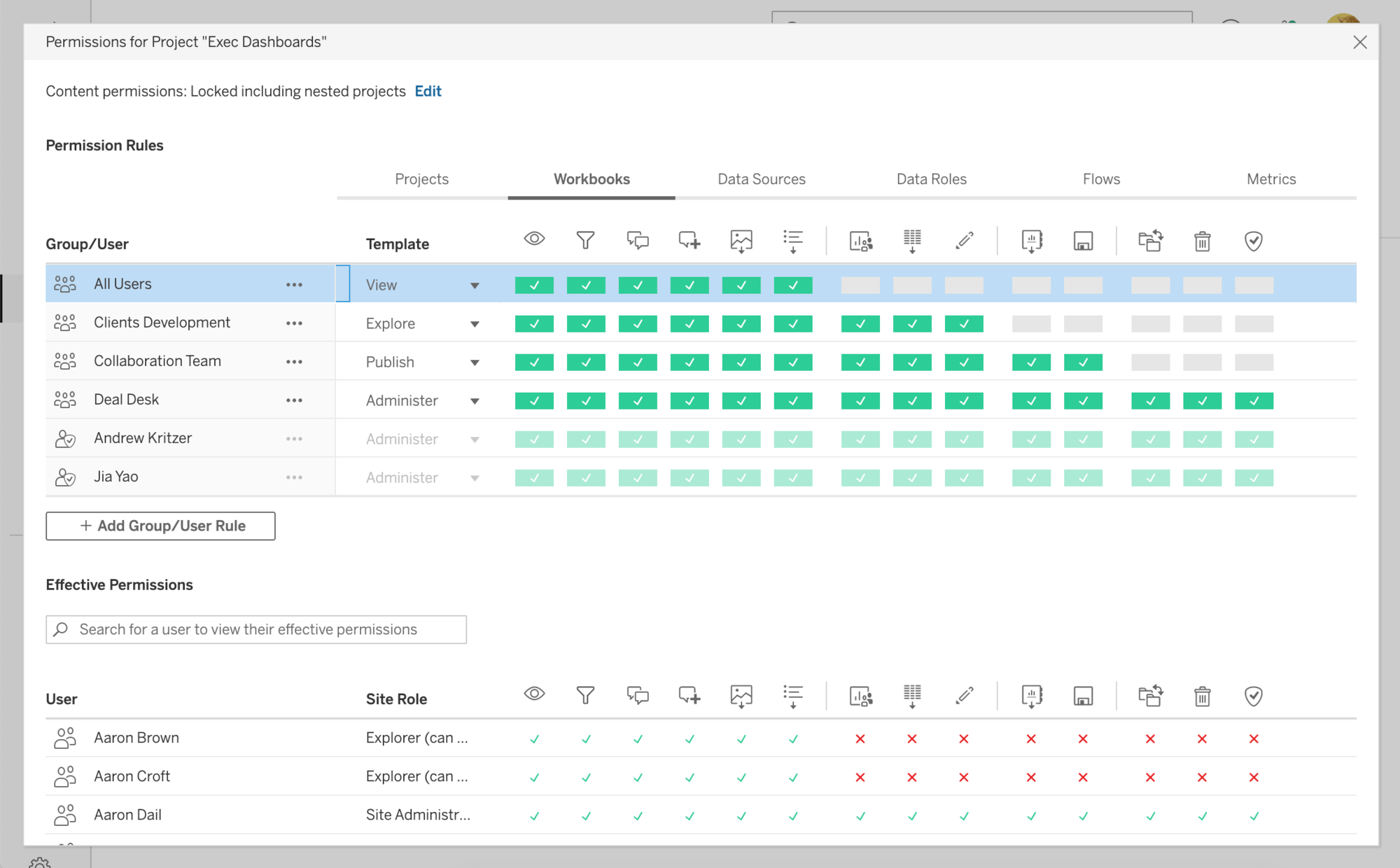
Permissions Dialog improvements.
Now you can set up permissions for users and groups faster and easier with action-oriented permission templates, a new copy-paste function for permission rules, and the ability to search both Users and Groups simultaneously without preselecting your choice. You can also set permissions for nested projects as you can see below:

Content Permissions.
All of these updates come with a revamped user interface for a more intuitive user experience.
9. Customizable Discover Pane for Tableau Desktop
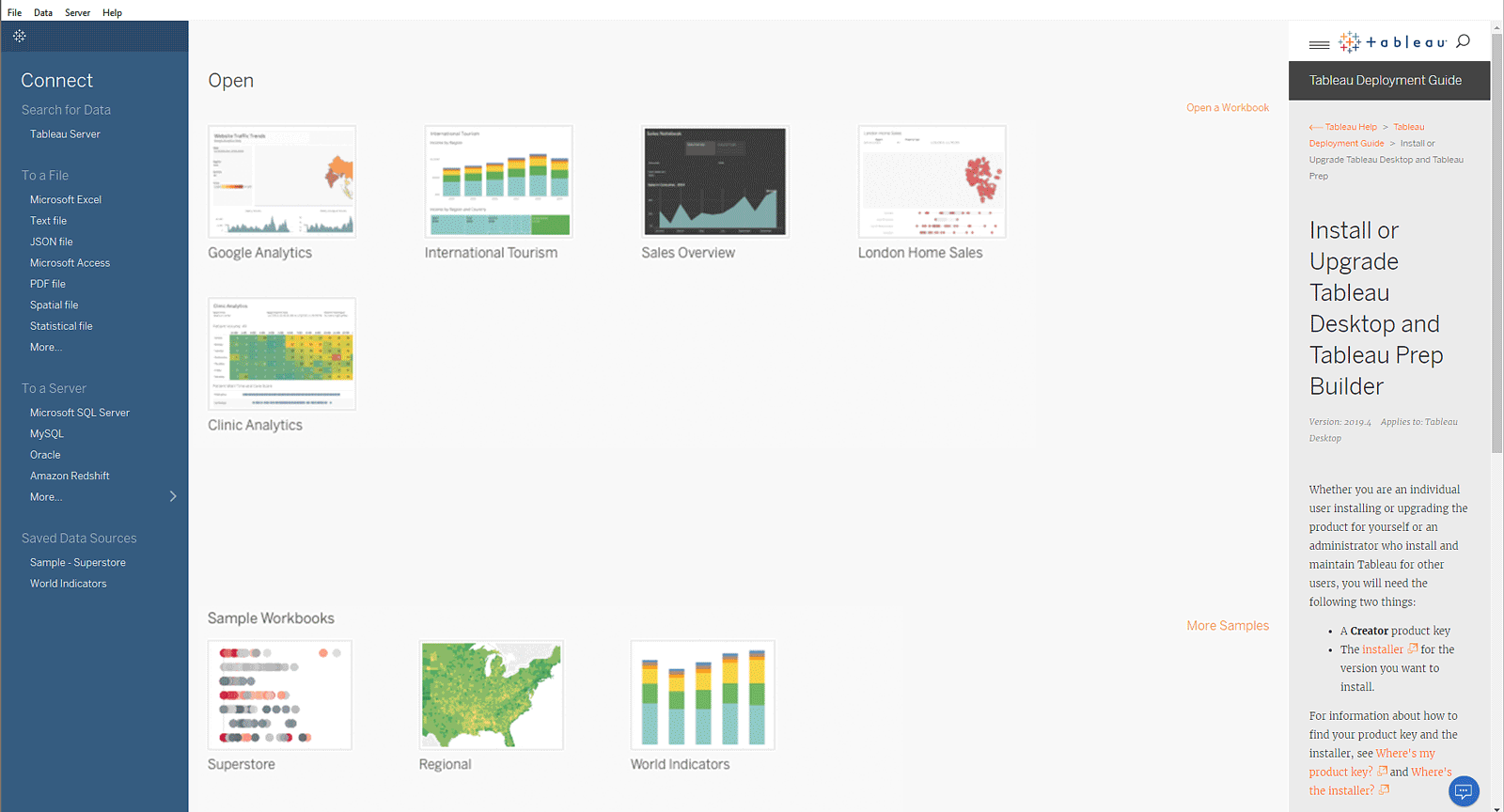
New Discover Pane.
You can now customize the Discover Pane in the start page of Tableau Desktop. Change the content that Tableau shows by default for your own custom content. You can provide links and information specific to your organization, making it easier for new users to get started with Tableau.
10. Connections Highlighting

Connections Highlighting example.
This new release also brings you Connections Highlighting that makes it easier to quickly map your Input steps to their originating connections in the Connections pane. By selecting one or more of your input steps, all connections will be highlighted.
Did we miss any features you think are worth mentioning? Let us know in the comments below!
Want a PDF version of this blog? Click here to download it.
References
- Tableau (2020). Tableau 2020.1. Retrieved from https://www.tableau.com/products/new-features?utm_campaign=2019196_R20.1_PRODL_USCA_en-US_2020-02-25_T1-Cust&utm_medium=Email&utm_source=Eloqua&domain=lewiscommunications.com&eid=CTBLS000022595145&elqTrackId=1fc70064eddf4ae0b6d4e157d9cdf2b5&elq=bad2d8918bb441b680dec8f2d7d95ca2&elqaid=41545&elqat=1&elqCampaignId=40910
- Gagliordi, N. (2020, February 26). Tableau brings improved admin features in 2020.1 release. Retrieved from https://www.zdnet.com/article/tableau-brings-improved-admin-features-in-2020-1-release/
- Sergio, P. (2020, February 25). Tableau 2020.1 new features. Retrieved from https://www.clearpeaks.com/tableau-2020-1-new-features/

